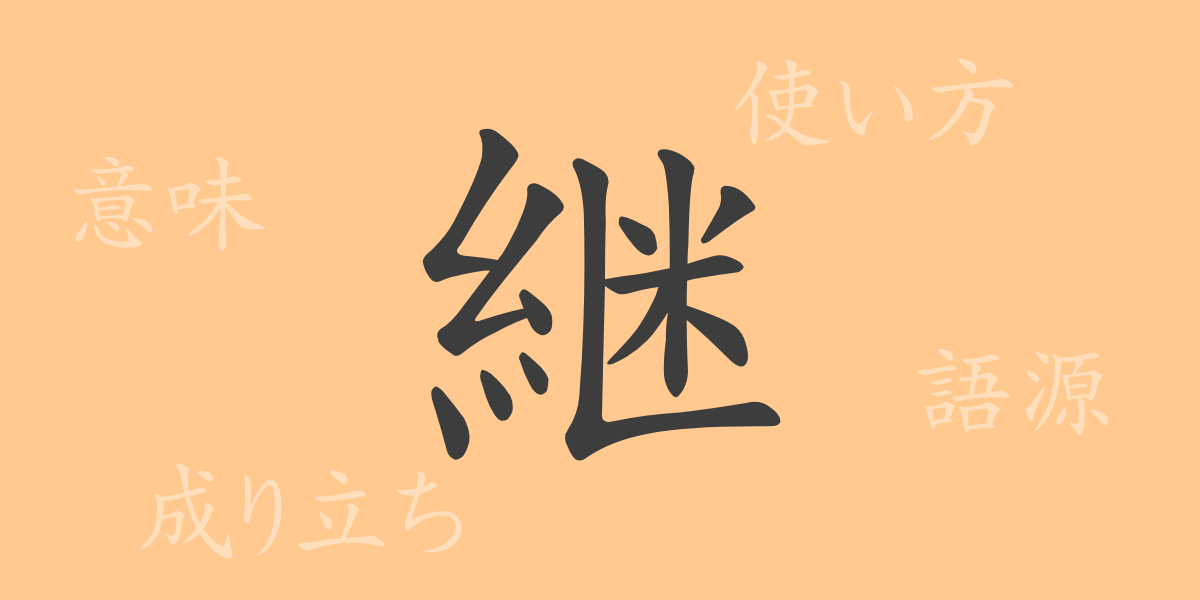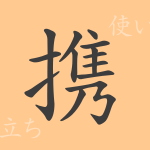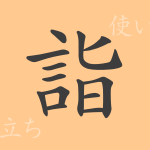In the rich expressions of the Japanese language, kanji convey culture and history through their unique meanings and shapes. The 常用漢字 (じょうようかんじ, jouyou kanji) “継(けい, kei)” is one such kanji frequently used in daily life. It appears in various idioms and expressions, adding depth to our language. This article delves into the origin, meaning, usage, and idioms related to “継(けい, kei)” to explore its charm.
Origin of 継(けい, kei) (Etymology)
The kanji “継(けい, kei)” evolved from ancient Chinese pictographs. Originally, it depicted the weaving of silk threads, representing continuity without interruption. Over time, it came to mean “to continue” or “to succeed.” This kanji symbolizes the importance of maintaining continuity and is deeply connected to the concept of passing down traditions and culture to the next generation.
Meanings and Uses of 継(けい, kei)
The basic meanings of “継(けい, kei)” are “to inherit” and “to continue.” It is used in contexts where something is carried on without interruption or passed down from one person or generation to another. For example, “事業を継ぐ(じぎょうをつぐ, jigyou o tsugu)” means “to take over a business,” and “意志を継ぐ(いしをつぐ, ishi o tsugu)” means “to carry on someone’s will.” Additionally, “継(けい, kei)” is used in words like “継母(けいぼ, keibo)” and “継父(けいふ, keifu)” to refer to stepmothers and stepfathers, respectively.
Readings, Stroke Count, and Radical of 継(けい, kei)
The kanji “継(けい, kei)” has multiple readings and can be understood better by examining its components.
- Readings: The on’yomi (Chinese reading) is “ケイ(けい, kei),” and the kun’yomi (Japanese reading) is “つぐ(つぐ, tsugu).”
- Stroke count: “継(けい, kei)” has 13 strokes.
- Radical: The radical is “糸(いとへん, itohen),” meaning thread.
Idioms, Expressions, and Proverbs Using 継(けい, kei)
Many idioms, expressions, and proverbs include “継(けい, kei),” reflecting its significance in Japanese. Here are some examples:
- 継承(けいしょう, keishou) – Inheriting a position, property, or rights from a predecessor.
- 継続(けいぞく, keizoku) – Continuing something without interruption.
- 継母(けいぼ, keibo) – A stepmother who is not the biological mother.
- 継子(ままご, mamago) – A stepchild, not the biological child of the stepmother or stepfather.
- 手を継ぐ(てをつぐ, te o tsugu) – Taking over someone else’s work or role.
- 火を継ぐ(ひをつぐ, hi o tsugu) – Literally or figuratively maintaining a fire or light without letting it go out.
Conclusion on 継(けい, kei)
The kanji “継(けい, kei)” is an essential character representing continuity and succession. In Japanese culture and society, maintaining continuity and carrying on the will of predecessors has always been valued. Through this kanji, we gain an appreciation for the importance of continuity and the role of a bridge between the past and the future. Noticing “継(けい, kei)” in daily life can remind us of its deep meanings and applications, enriching our understanding of the Japanese language.

























